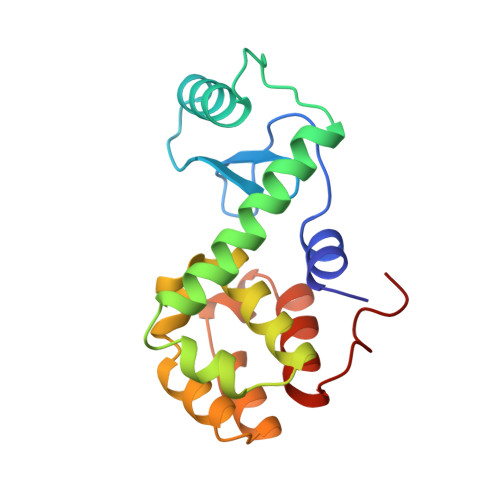A relationship between protein stability and protein function.
Shoichet, B.K., Baase, W.A., Kuroki, R., Matthews, B.W.(1995) Proc Natl Acad Sci U S A 92: 452-456
- PubMed: 7831309
- DOI: https://doi.org/10.1073/pnas.92.2.452
- Primary Citation of Related Structures:
253L, 254L, 255L - PubMed Abstract:
Enzymes are thought to use their ordered structures to facilitate catalysis. A corollary of this theory suggests that enzyme residues involved in function are not optimized for stability. We tested this hypothesis by mutating functionally important residues in the active site of T4 lysozyme. Six mutations at two catalytic residues, Glu-11 and Asp-20, abolished or reduced enzymatic activity but increased thermal stability by 0.7-1.7 kcal.mol-1. Nine mutations at two substrate-binding residues, Ser-117 and Asn-132, increased stability by 1.2-2.0 kcal.mol-1, again at the cost of reduced activity. X-ray crystal structures show that the substituted residues complement regions of the protein surface that are used for substrate recognition in the native enzyme. In two of these structures the enzyme undergoes a general conformational change, similar to that seen in an enzyme-product complex. These results support a relationship between stability and function for T4 lysozyme. Other evidence suggests that the relationship is general.
- Institute of Molecular Biology, Howard Hughes Medical Institute, University of Oregon, Eugene 97403.
Organizational Affiliation:


















